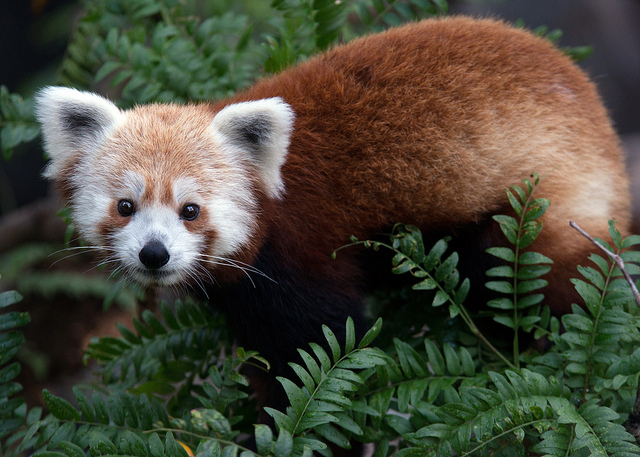This post was contributed by Kristen Bullard, librarian for the National Zoological Park.
Have you ever wondered why Rusty the red panda was paired with the female, Shama? Or been curious about how the black-footed ferret was saved from extinction in the wild? If so, then this Valentines’ themed post is for you!
As the librarian for the National Zoological Park (NZP) I enjoy an interesting variety of reference queries. Some of the themes include NZP history; animal health, nutrition and hand-rearing methods; and, the subject of this Valentines blog post, genetics, reproduction and species survival. One of the NZP researchers, Jon Ballou, is a regular NZP Library user. Yet, it was one of the NZP animal keepers who described to me the impact of his work as the first animal matchmaker.

The conservation of threatened or endangered species (IUCN Red List) is a core mission of NZP’s Smithsonian Conservation Biology Institute and, more specifically, the Center for Conservation and Evolutionary Genetics. Starting in the late 1970s and early 1980s, Jon Ballou and Katherine Ralls’ groundbreaking research on genetic problems in zoo animals led zoos to recognize the need for genetic management of captive (and wild) populations, which resulted in a turning point for animal care and management in zoos. Dr. Ballou later went on the develop much of the theory behind the genetic management of zoos populations as well as develop the software used to manage these populations. The most significant outcome is national and international collaborations among zoos focused on identifying the best breeding pairs for a species to prevent inbreeding and promote the survival of the species. These matchmaking analyses, called species survival plans, result in animals being traded or lent to other zoos for better “matches,” increasing genetic diversity and improving species recovery.
Dr. Ballou’s software for determining the most appropriate mates for a species certainly sounds like online dating, and it is working for species like the red panda and the black-footed ferret. When asked if there are any possible applications to online dating for humans, his reaction was “Well, there are studies which show that people with different genetics are more attracted to each other than couples with similar genetics – so, who knows? It just might work!”

Be First to Comment